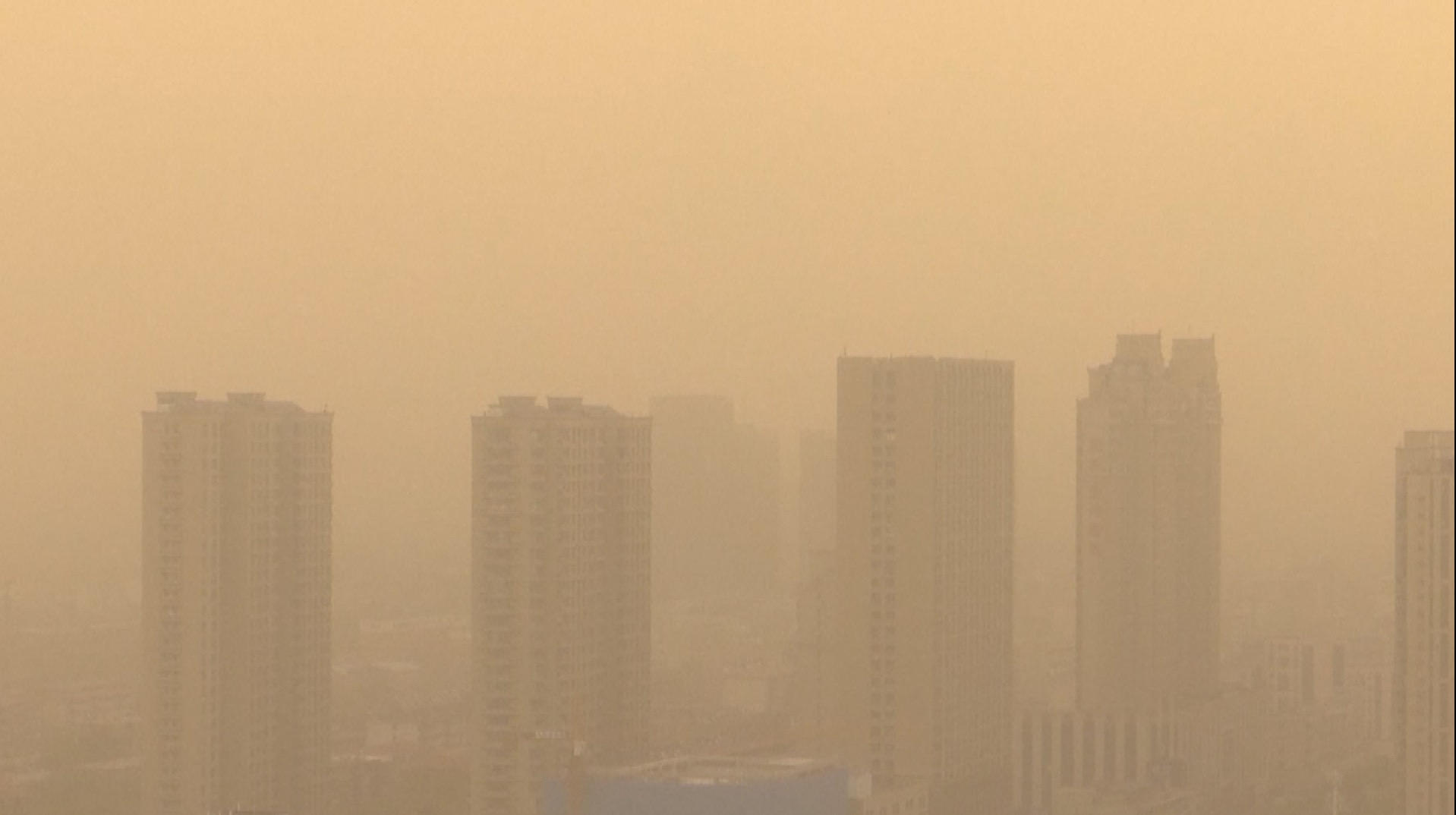00:47

Chinese authorities have warned people in the capital city of Beijing and several regions in the north of respiratory dangers and very low visibility as intense sandstorms originating from Mongolia approach.
The sandstorms on Monday spread from northeastern Heilongjiang Province to as far south as Shanghai.
On Tuesday, thick clouds of sand and yellow smog enveloped Beijing, shrouding buildings and roads in a dense yellow cloud with air quality at hazardous levels. Many residents in the capital were seen wearing thick KF94 masks and parkas to protect themselves from the unwelcome dust.
"When I got back from work last night, I think the air quality had really deteriorated, and then I felt uncomfortable breathing. When I got up and came out this morning, I deliberately put my hat on. I also brought a slightly thicker mask, which will ease things up a bit," said a Beijing resident.
This was not the first sandstorm to hit north China this year. The current "dusty weather," despite blowing through a wide area, is weaker in terms of range and intensity than the sandstorm in late March – the strongest so far this year, according to the National Meteorological Center (NMC).
Since the beginning of March, China has experienced five rounds of "dusty weather," which is more than in the same period in previous years, according to the NMC.
Last spring, north China witnessed eight rounds of "dusty weather." From 2000 to 2021, there were about 11 spates of "dusty weather" annually on average, according to the 2022 China Climate Bulletin.
The sandstorms that have swept the northern region so far this year have raised concerns about the frequency of such severe weather. But Gui Hailin, chief forecaster at the NMC, said the sandstorms were actually a normal occurrence as the cyclones from Mongolia strengthened with the rise in temperature and wind speed in springtime.
"The cold air activity in the country remained active in March and April. Due to the influence of cold air, Mongolian cyclones and cold fronts on the ground have become favorable catalysts, transporting sand and dust from the sand source areas downstream to even further areas," said Gui.
The expert warned people in affected areas to take precautions given the potential harm of the extreme weather to people's health.
"The sand particles carry heavy metals and allergens, so people with cardiovascular diseases or allergies should stay indoors and take protective measures, such as wearing masks when going out," Gui said.
At 6 p.m. on Tuesday, the NMC issued another blue alert for sandstorms, the lowest in the country's four-tier weather warning system, saying that 19 provincial-level regions would see blowing sand or floating dust from 8 p.m. on Tuesday to 8 p.m. on Wednesday.
(If you want to contribute and have specific expertise, please contact us at nature@cgtn.com.)